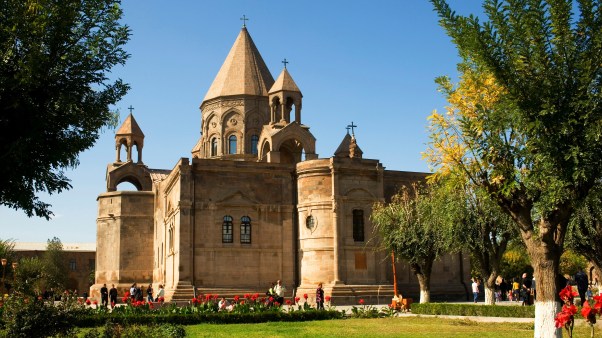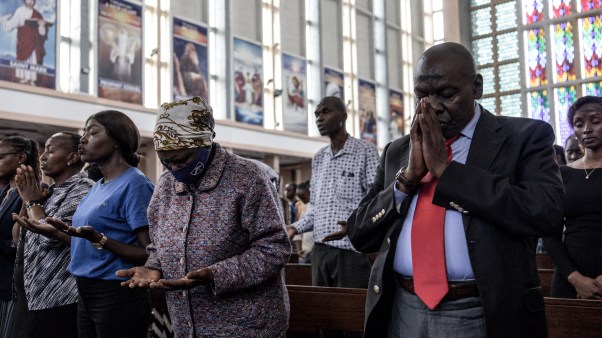In their attempt to rescue the Bible from conservative, scholars in the Jesus Seminar became liberal fundamentalists.
Here are some things Jesus didn’t say:
“Before the rooster crows you will disown me three times.”
“I swear to you, you who have followed me, when the son of Adam [sic] is seated on his throne of glory in the renewal (of creation), you also will be seated on twelve thrones and sit in judgment on the twelve tribes of Israel.”
“Congratulations to those who work for peace! They will be known as God’s children.”
That, at least, is the opinion of the Jesus Seminar, a group of 74 scholars who have crowned the first six years of their work by publishing The Five Gospels: The Search for the Authentic Words of Jesus (Macmillan). In fact, fully 82 percent of what the canonical Gospels ascribe to Jesus is deemed inauthentic, and much of the remaining 18 percent is only doubtfully authentic.
The book has garnered a fair bit of notice in the media, and the Jesus Seminar is poised to attract more attention in the months and years ahead. And that is what they want.
From their perspective, competent biblical scholarship has been unfairly cloistered, shut up in university seminar rooms, while the religious fabric of the nation is stitched together by televangelists. These scholars are coming out. Their aim is not to convince scholarly colleagues who disagree with them—in fact, they never acknowledge their existence—but to make a splash in the media and drown “the dictatorial tactics of the Southern Baptist Convention and other fundamentalisms.”
Funds for the project come from the Westar Institute, a think tank with headquarters in Sonoma, California, and directed by Robert W. Funk. Support for the Westar Institute in this venture has come from Polebridge Press and from the fellows and associate members of the institute. Fellows are scholars who are permitted to vote; associate members are interested clergy, laypeople, students, and sponsors.
The Jesus Seminar, then, is a semiannual gathering of 70-plus, mostly liberal scholars, who meet to evaluate the legitimacy of the New Testament’s record of Jesus’ actions and sayings. They present papers, discuss texts, and then, with self-conscious theatricality, vote on blocks of text (sometimes an entire section, sometimes as little as a word or two) using colored beads.
Casting a red bead means that the scholar thinks Jesus said this or at least something very much like it. Pink signals less certainty about a saying’s authenticity. Gray means that Jesus did not say this, but maybe something of his thought hides obscurely behind the passage. Black signifies that the text comes from earlier or later sources, but cannot be credited to Jesus.
On a modification of the grade-point average scheme, red = 3, pink = 2, gray = 1, and black = 0. The ballots are added up and divided by the number of votes cast in order to ascertain the weighted average. The scale is then converted to percentages: For a text to be printed in red, it has to rate .7501 or higher. Pink print reflects .5001 to .7500, gray ranges from .2501 to .5000, and black .2500 or under.
Yet despite this show of scholarly objectivity, authoritatively garnished with colors and numbers, everything turns on who the scholars are and what criteria they use. All else is of secondary importance. If I were to choose 75 scholars heavily weighted to the conservative end of the scholarly spectrum—members, say, of the Institute for Biblical Research, or of the Evangelical Theological Society—and then invested the enterprise with colored beads and weighted statistics, the results would be radically different. But none of this division of scholarly opinion is ever admitted.
In fact, that is one of the most striking features of The Five Gospels and of the press releases of the Westar Institute. The words scholars and scholarly are almost always attached to the opinions of the Jesus Seminar and detached from all others. We are told that one of their scholars, Daryl Schmidt, “is dubious that … sabbath encounters actually took place in Jesus’ day. Like other scholars [emphasis mine], he is inclined to the view that such stories reflect controversies of a later time between church and synagogue.” Which scholars? All scholars? Most scholars? Most scholars of the Jesus Seminar?
Not surprisingly, the “seven pillars of scholarly wisdom” set out in the introduction to The Five Gospels include the assumption that the burden of proof now lies with those who want to claim that any utterance ascribed to Jesus is authentic. All of Jesus’ words in the Gospels must be assumed inauthentic until proven otherwise.
This is “scholarly”? There is substantial literature on the “burden of proof” argument, and less and less of it aligns with such skepticism. But contrary opinions are rare and never fairly evaluated in The Five Gospels.
The red- and pink-lettered version
The Five Gospels reflects the opinions of the Jesus Seminar scholars by printing Jesus’ words in a color-coding system aligned with the infamous colored beads: red for most probably authentic, pink for probably authentic, gray for probably inauthentic, and boldfaced black for almost certainly inauthentic. The rest of the text, whether of the Gospels (narrative text, words assigned to other speakers) or of the accompanying notes, is plain black text (not boldfaced). The version of the Gospels on which this is carrried out is not one of the standard translations (such as NIV or NRSV), but one created in large measure for this purpose. Naturally, it is called the “Scholars Version” (SV).
“Foremost among the reasons for a fresh translation,” we are told, “is the discovery of the Gospel of Thomas.” That, of course, is why the title of the book is The Five Gospels and not The Four Gospels: Thomas is integrated with the canonical four. One has to read on another 30 pages to be reminded that the Coptic version of Thomas was discovered as long ago as 1945. In other words, the discovery of the Gospel of Thomas was not sufficient reason to prompt the translators of the RSV, the NEB, the GNB, the NASB, the NIV, the NRSV, and a host of other versions published since 1945, to produce their versions, still less to include Thomas. But almost half a century after its unearthing, the scholars of the Jesus Seminar think that the “foremost” reason justifying their work is the discovery of the Gospel of Thomas.
The translation itself is in earthy, colloquial English—definitely on the “functional equivalent” rather than the “literal” side of the translation spectrum. Sometimes this leads to very shrewd renderings, sometimes to mere pedantry. The well-known “He who has ears to hear, let him hear” (Mark 4:9) is changed in the sv in order to preserve the assonance in Greek: “Anyone here with two good ears had better listen!” Sometimes the rendering is too colloquial. The leper says to Jesus, “If you want to, you can make me clean,” to which Jesus replies, “Okay—you’re clean” (Mark 1:40–41). And sometimes it is vulgar: “You scholars and Pharisees, you impostors! Damn you! You slam the door of Heaven’s domain in people’s faces” (Matt. 23:13). Somehow this does not sound like the Jesus who simultaneously denounces and weeps over the city.
The 38-page introduction provides a potted history of gospel criticism, almost every point of which needs to be modified or qualified. “The search for the Jesus of history began with Hermann Samuel Reimarus (1694–1768),” the introduction confidently asserts. But the assertion, a common shibboleth in some circles, needs two caveats: (1) Richard Simon, a French Catholic priest (1638–1712), started down this track well before Reimarus; (2) it is not that earlier Christian thinkers displayed no interest in historical questions about Jesus, but that they refused to search for a naturalistic Jesus—which is what the Jesus Seminar means by “the Jesus of history.”
In the several pages devoted to distinguishing “Jesus” from “the Christ” (a commonplace in the more skeptical wings of biblical scholarship during the last two centuries), a variety of straw men are manufactured and destroyed. The finiteness of human knowledge destroys the possibility of certainty, the scholars argue, and “this view makes room for faith, which seems to be in short supply for those who think they have the absolute truth.” Or again: “Why, if God took such pains to preserve an inerrant text for posterity, did the spirit not provide for the preservation of original copies of the gospels? It seems little enough to ask of a God who creates absolutely reliable reporters.” The small element of truth in each barb may be enough to trouble untutored Christians who sometimes ask naïve questions. But these glib objections do not even attempt to wrestle with the massive literature on these subjects that has accumulated over centuries and that has long since effectively responded to such queries.
The rest of the book prints Mark, Matthew, Luke, John, and Thomas, in that order, complete with color coding, and noting ostensible parallels in the other four. The fairly extensive notes that surround the text primarily offer the Jesus Seminar’s justification for its skepticism from passage to passage.
What Jesus didn’t say
One must not become too optimistic over the fact that, whatever the seminar’s failings, at least it judges 18 percent of the words ascribed to Jesus as authentic. Surely that is better than nothing. But most of these are at best only “probably” authentic.
The criteria by which so much gospel material ascribed to Jesus is dismissed as inauthentic are not much more than restatements of old-fashioned form and redaction criticism. Doctrinaire redaction criticism has often insisted, for instance, that if a saying ostensibly from Jesus could have been uttered by his contemporaries, there is no particular reason to think it came from him. If it is demonstrably in line with later church teaching, it is best to suppose that the church created the saying. From these two criteria alone (and there are others of similar ilk), the only sayings of Jesus that scholars may judge to be authentic are those that are idiosyncratic.
Such criteria have been criticized repeatedly. Jesus was, after all, a first-century Jewish man. To begin by arguing that he must not sound like one is akin to arguing that Churchill must never sound like an Englishman. To turn around and say that Jesus must not sound like the church, either, is to assume that perhaps the most influential man in history never said anything that the church believed, cherished, and passed on. Even if these criteria were reasonable—in fact, they are blatantly reductionistic—they could not possibly provide us with a picture of the historical Jesus. At best, they might hint at a few of his idiosyncrasies.
The fellows of the Jesus Seminar seem to think that the witness of the Gospels’ writers cannot be accepted because they are passionately committed to what they are saying. Passionate witnesses, the fellows assume, distort the evidence: they are likely to write down whatever they want you to believe, simply because they themselves believe it so strongly. But counterexamples are not hard to find. The first survivors of the Holocaust were passionate in their witness, too. But by and large, their passion drove them toward great accuracy and carefulness, precisely because they wanted others to believe them. To put it another way: If the evangelists had handled their exalted themes with dispassionate distance, they could have been justly accused of blasphemy—in the same way that dispassionate witness in a Holocaust survivor would finally be judged obscene.
Moreover, where did all the wonderful teaching and reflection in the Gospels come from? Are we really to believe that the most influential mind in the Western world was unable to come up with more than a few platitudinous moralisms? Was he unable to comment on the swirling currents of his day—the political threats, the passion of many for ritual holiness, the apocalyptic and messianic expectation that fired many people, the hope of final vindication and justice?
Was Jesus a moralizing twit, while the church proved wonderfully creative? The anemic Jesus of the Jesus Seminar could not possibly have generated the robust, death-defying faith of the believers in the early church. The only credible explanation is the miracle of the Resurrection, attested by hundreds, just as Jesus had predicted.
What Jesus did not do
The fellows of the Jesus Seminar are now heading into a second phase. Having dismissed most of the words of Jesus as inauthentic, they are now holding their semiannual meetings to assess the deeds of Jesus, with very similar results. Among the verdicts: the account of Jesus walking on the water was inspired by a story in Homer, and Jesus never raised anyone from the dead.
Interestingly, they conclude that Jesus was able to cure some psychosomatic maladies: the fellows have “reluctantly admitted that Jesus probably functioned as what we would today call a ‘faith healer.’ ” The news release in which this statement occurs adds a pious reflection: “These conclusions contradict the claim made by many fundamentalists that critical scholars, such as Fellows of the Jesus Seminar, are unwilling to credit Jesus with unusual curative powers.” But the only “unusual curative powers” they do allow Jesus are in the realm of the psychosomatic, not the miraculous.
One of the papers for the October 1993 meeting of the seminar analyzes the account of “the resuscitation of a deceased youth” (Luke 7:11–17). Its author, Roy W. Hoover (who was also coeditor, with Robert Funk, of The Five Gospels), compares the account of the resuscitation of an apparently dead person by the Greek physician Asclepiados (told by Apuleius in his work Florida), and a similar “miracle” ascribed to Apollonius (in Philostratus’s biography of this first-century sage).
But the account of Asclepiados makes it clear that the “dead” man was not really dead: the good doctor “discovered in him a hidden vein of life,” insisted he was alive, brought him home, and nursed him back to health. Philostratus is explicitly uncertain about whether or not Apollonius’s “miracle” was of the same sort.
In the period before it became a legal requirement for a qualified doctor to pronounce a person dead, the period before almost universal embalming, the medical literature tells of not a few people who were thought dead but who sprang to life at inconvenient moments. That is one of the assumptions in the account of the raising of Lazarus (John 11): By the time Jesus called him forth from the tomb, he had been dead for four days and was badly decomposing, so that Jesus’ miracle could not be dismissed as nothing more than astute diagnosis. One may, I suppose, on the basis of naturalistic presuppositions, discount the record, but one should not confuse accounts like this and the one in Luke 7 with the ministrations of Asclepiados.
I imagine we shall shortly be treated to another volume of the multi-colored Five Gospels, with only a very small percentage of Jesus’ actions judged as authentic.
Rethinking the Canon
But even this will not satisfy the Westar Institute. Robert Funk has now called for a Canon Council, to meet jointly with the Jesus Seminar over several years. The council “will discuss whether the Book of Revelation should be retained as a part of the New Testament, in view of the recent tragic events in Waco, Texas, and the rising abuse of the last book in the New Testament.” The council will also ask whether reconstructed Q (from the German Quelle, “source,” referring to an ostensible source behind Matthew and Luke, roughly equivalent to their common material) should be printed separately in editions of the Gospels. Thomas has, in fact, been granted a crypto-canonical status in The Five Gospels. After all, if there is nothing distinctive about the four canonical Gospels, it is difficult to imagine why they should be the only ones given canonical status.
But quite apart from sophisticated treatments of revelation, inspiration, and authority as applied to the Gospels, the merest novice can see that the Gospel of Thomas is quite unlike the canonical Gospels. It is a collection of 114 sayings (in modern numbering) ascribed to Jesus, with almost no narrative contexts. The majority of scholars hold it was written after the canonical Gospels and under the influence of some early form of Gnosticism. Little of this is aired and none of it discussed by the Westar publications to date. But that does not inhibit their preparations to change the contours of the Scriptures as we know them. Considering the volume of sophisticated studies on the Canon, the hubris is breathtaking.
In short, the work of the Westar Institute represents bad history before it represents bad theology. This is frankly depressing, for many of the fellows have produced front-rank scholarship in other venues. Darryl Schmidt’s work on Hellenistic Greek is outstanding, and Robert Funk’s contribution to the Blass/Debrunner/Funk grammar, for example, is beyond praise. So what has gone wrong here?
First, Funk himself, not to say the seminar his Westar Institute supports, is passionately committed to philosophical naturalism. Mere evidence will never overturn it; historical evidence can always be explained away. Only this can explain the hermeneutical naïveté of a passage like this: “The Scholars Version is free of ecclesiastical and religious control, unlike other major translations into English.… Since SV is not bound by the dictates of church councils, its contents and organization vary from traditional Bibles.… The Scholars Version is authorized by scholars.”
Second, for all of its scholarly pretension, the Jesus Seminar is not addressing scholars. It is an open grab for the popular mind, for the mass media. Just as conservatives tend to view current events as the evil effects of secular humanism, so radicals line up televangelists, pro-life protesters, denominational disputes, and a growing conservative church as the evil effects of fundamentalism. The Jesus Seminar is not so much a work of scholarship as a tract for the times, an attempt to overthrow a perceived enemy.
The real irony is that, in some ways, the Jesus Seminar has itself become a parody of what it rejects. In tone and attitude, in its reductionism and self-confident exclusivism, in its self-righteousness and condescending pronouncements, it is more fundamentalistic than the fundamentalism it eschews.
Paul Brand is a world-renowned hand surgeon and leprosy specialist. Now in semiretirement, he serves as clinical professor emeritus, Department of Orthopedics, at the University of Washington and consults for the World Health Organization. His years of pioneering work among leprosy patients earned him many awards and honors.










